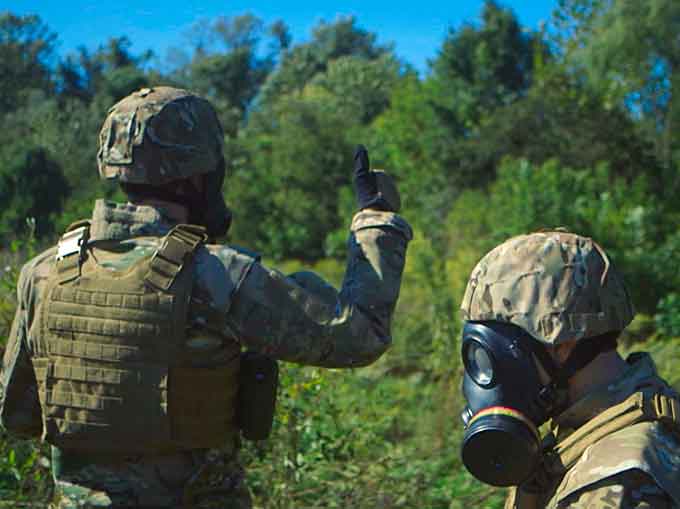
The risk associated with today’s chemical warfare and industrial hazards is more disseminated than ever – from chemical warfare agents (CWAs), toxic industrial chemicals (TICs), precursors and degradation products, to the growing use of novel materials.
The U.S. Department of Defense’s (DOD) Joint Program Executive Office for Chemical, Biological, Radiological and Nuclear Defense (JPEO-CBRND) exists to manage our nation’s investments in chemical, biological, radiological, and nuclear (CBRN) defense equipment.
With 20 representatives in various DoD Offices across the United States and in other countries, JPEO-CBRND maintains full situational awareness of CBRN needs, policies, up and coming technologies, and threats.
(Learn More. Not all wars are fought with bombs and bullets. As the threat from chemical, biological and nuclear weapons rises, NATO has stepped up its efforts in providing specialized training to partner countries who are most at threat. Courtesy of NATO and YouTube. Posted on Nov 4, 2016.)
Smiths Detection (SDI) has been selected by the JPEO-CBRND’s Joint Project Manager, Nuclear Biological Chemical Contamination Avoidance (JPM-NBC CA), with partner 908 Devices Inc., to be one of the suppliers to design and engineer an Aerosol and Vapor Chemical Agent Detector (AVCAD).
AVCAD is the next step in miniaturized chemical detection.

“Smiths Detection has partnered with the Department of Defense to provide more than ninety-one thousand Joint Chemical Agent Detector (JCAD) units over the past fourteen years, making the program one of the most effective chemical warfare protection solutions in history,” explained Shan Hood, President of SDI.
Intended as the next generation chemical detector, the AVCAD is designed to detect, identify, alarm and report the presence of traditional and advanced threat vapors and aerosols.
Using a wireless remote alarm capability and both mounted and portable configurations, AVCAD will support missions for the U.S. Army, Air Force, Navy and Marine Corps.
During the development phase of the AVCAD project, the DOD extensively tested the selectivity, sensitivity and capability of HPMS.
(Learn More. Smiths Detection (SDI) manages their programs precisely, , at each stage reviewing and evolving their methods, so they can draw on this experience in future projects. SDI’s program management expertise brings specific skills to every project the company undertakes. Courtesy of Smiths Detection and YouTube. Posted on Jan 9, 2017.)
SDI along with 908 Devices, are one of only two suppliers to move into the engineering and manufacturing phase for the AVCAD, using High-Pressure Mass Spectrometry (HPMS) for the AVCAD.
HPMS technology is the core of the 908 Devices commercially available devices, including the MX908™ trace chemical detection device.

“Being selected for the next phase of this program is tremendous validation of our foundational technology platform and represents a major milestone in our pursuit to deliver on a new standard of chemical detection,” said Dr. Kevin J. Knopp, President and CEO of 908 Devices.
“We look forward to working in partnership with Smiths Detection on the AVCAD in this next phase and are truly honored to have a role in protecting our U.S. military.”
The AVCAD award marks a new milestone for Smiths Detection’s chemical detection technology development and positions its Edgewood, MD facility for manufacturing growth in support of the program.
Learn More…
908 Devices Protects Joint Forces Under DoD CBRN Program Award















